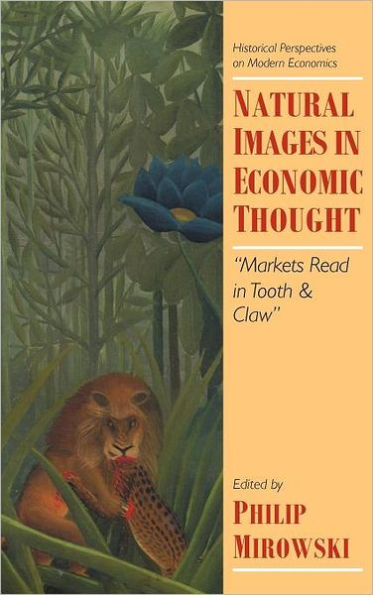Natural Images in Economic Thought: Markets Read in Tooth and Claw
This collection of interdisciplinary essays is the first to investigate how images in the history of the natural and physical sciences have been used to shape the history of economic thought. It documents the extent to which scholars have drawn on physical and natural science to ground economic ideas and evaluate the role and importance of metaphors in the structure and content of economic thought. These range from Aristotle's discussion of the division of labor, to Marshall's evocation of population biology, to Hayek's dependence upon evolutionary concepts, and more recently to neoclassical economists' invocation of chaos theory.
1100949785
Natural Images in Economic Thought: Markets Read in Tooth and Claw
This collection of interdisciplinary essays is the first to investigate how images in the history of the natural and physical sciences have been used to shape the history of economic thought. It documents the extent to which scholars have drawn on physical and natural science to ground economic ideas and evaluate the role and importance of metaphors in the structure and content of economic thought. These range from Aristotle's discussion of the division of labor, to Marshall's evocation of population biology, to Hayek's dependence upon evolutionary concepts, and more recently to neoclassical economists' invocation of chaos theory.
240.0
In Stock
5
1

Natural Images in Economic Thought: Markets Read in Tooth and Claw
636
Natural Images in Economic Thought: Markets Read in Tooth and Claw
636
240.0
In Stock

Product Details
| ISBN-13: | 9780521443210 |
|---|---|
| Publisher: | Cambridge University Press |
| Publication date: | 07/29/1994 |
| Series: | Historical Perspectives on Modern Economics |
| Pages: | 636 |
| Product dimensions: | 5.98(w) x 9.02(h) x 1.57(d) |
From the B&N Reads Blog
